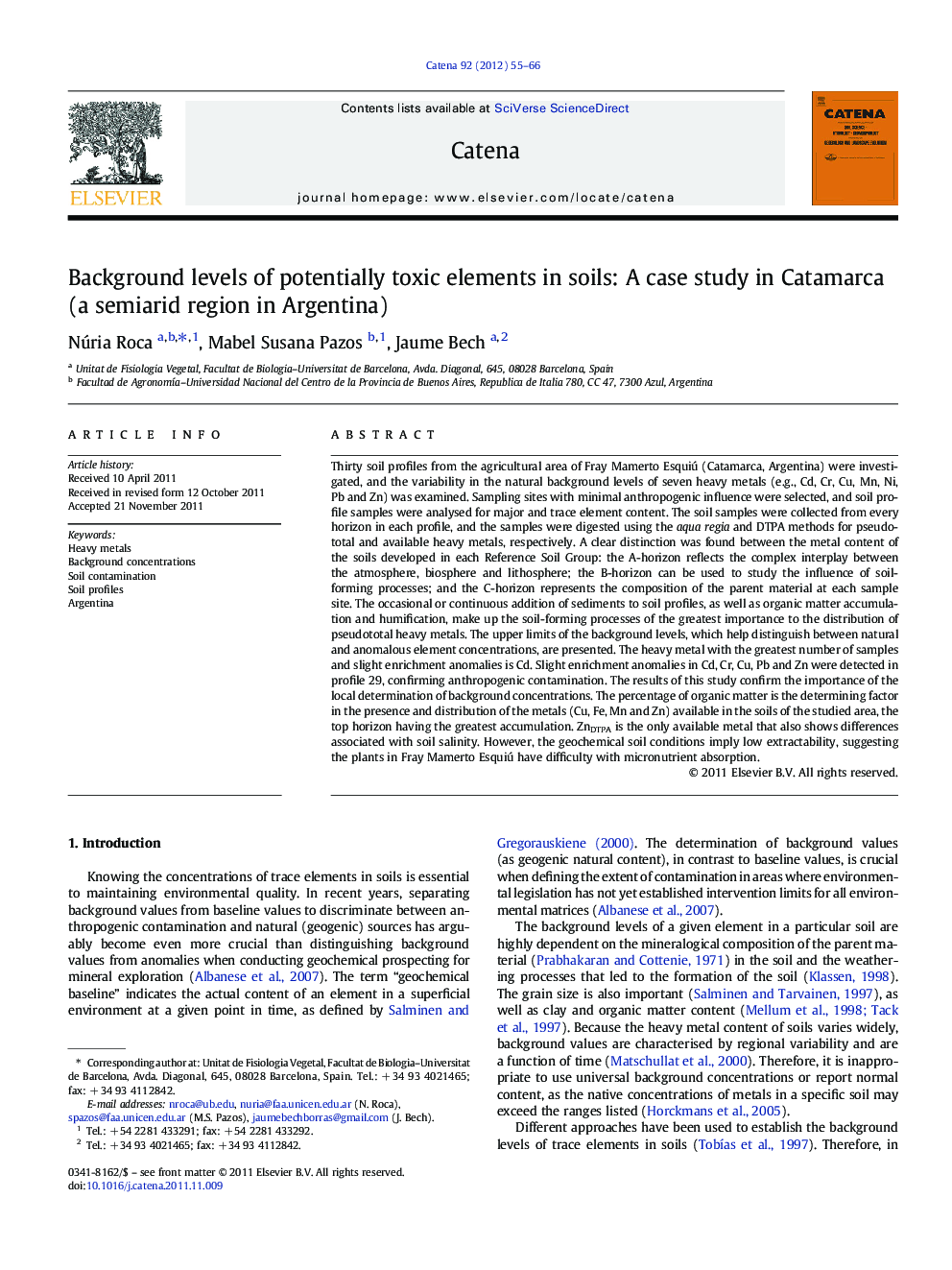| Article ID | Journal | Published Year | Pages | File Type |
|---|---|---|---|---|
| 4571888 | CATENA | 2012 | 12 Pages |
Thirty soil profiles from the agricultural area of Fray Mamerto Esquiú (Catamarca, Argentina) were investigated, and the variability in the natural background levels of seven heavy metals (e.g., Cd, Cr, Cu, Mn, Ni, Pb and Zn) was examined. Sampling sites with minimal anthropogenic influence were selected, and soil profile samples were analysed for major and trace element content. The soil samples were collected from every horizon in each profile, and the samples were digested using the aqua regia and DTPA methods for pseudototal and available heavy metals, respectively. A clear distinction was found between the metal content of the soils developed in each Reference Soil Group: the A-horizon reflects the complex interplay between the atmosphere, biosphere and lithosphere; the B-horizon can be used to study the influence of soil-forming processes; and the C-horizon represents the composition of the parent material at each sample site. The occasional or continuous addition of sediments to soil profiles, as well as organic matter accumulation and humification, make up the soil-forming processes of the greatest importance to the distribution of pseudototal heavy metals. The upper limits of the background levels, which help distinguish between natural and anomalous element concentrations, are presented. The heavy metal with the greatest number of samples and slight enrichment anomalies is Cd. Slight enrichment anomalies in Cd, Cr, Cu, Pb and Zn were detected in profile 29, confirming anthropogenic contamination. The results of this study confirm the importance of the local determination of background concentrations. The percentage of organic matter is the determining factor in the presence and distribution of the metals (Cu, Fe, Mn and Zn) available in the soils of the studied area, the top horizon having the greatest accumulation. ZnDTPA is the only available metal that also shows differences associated with soil salinity. However, the geochemical soil conditions imply low extractability, suggesting the plants in Fray Mamerto Esquiú have difficulty with micronutrient absorption.
► We examine changes in the heavy metal concentration due to soil profile development. ► The studied soils, excepted profile 29, fall within the range of the background. ► Without local background information, incipient contamination will not be detected. ► Nearly 70% of the soil samples are deficient in Fe or Zn due to soil geochemical conditions.
